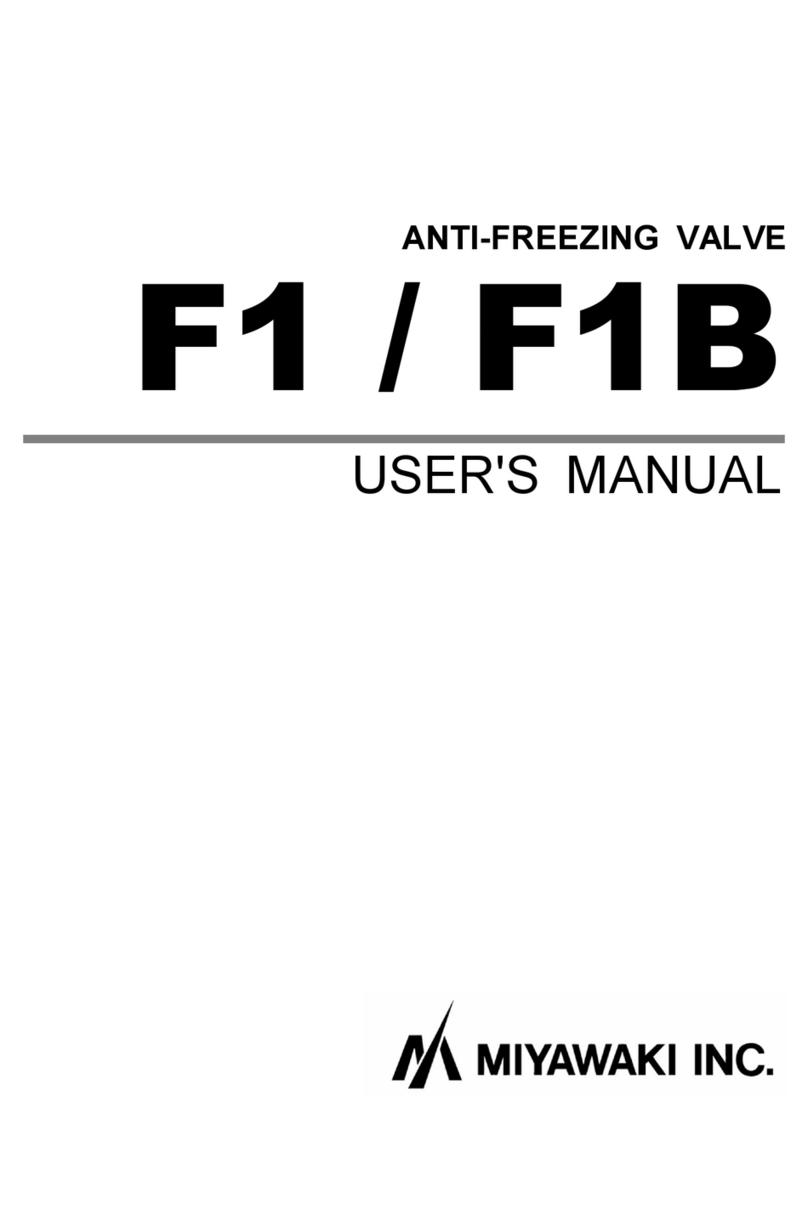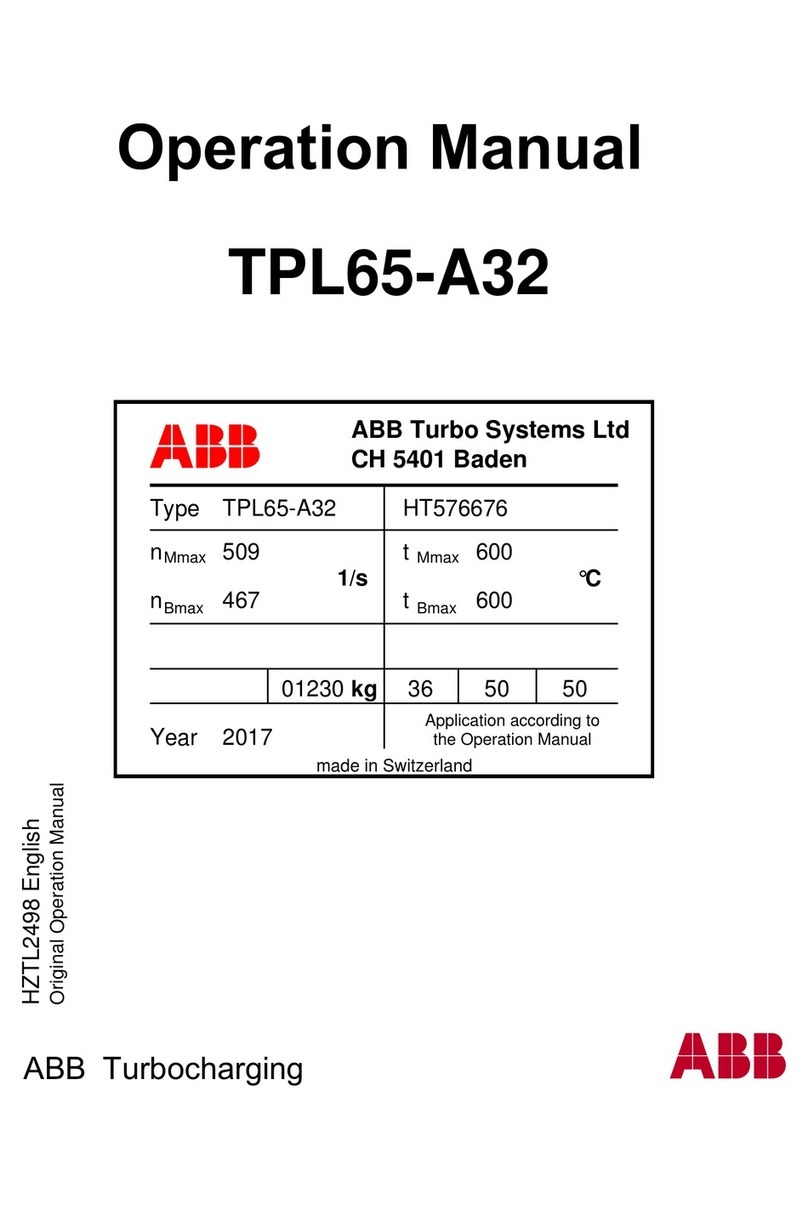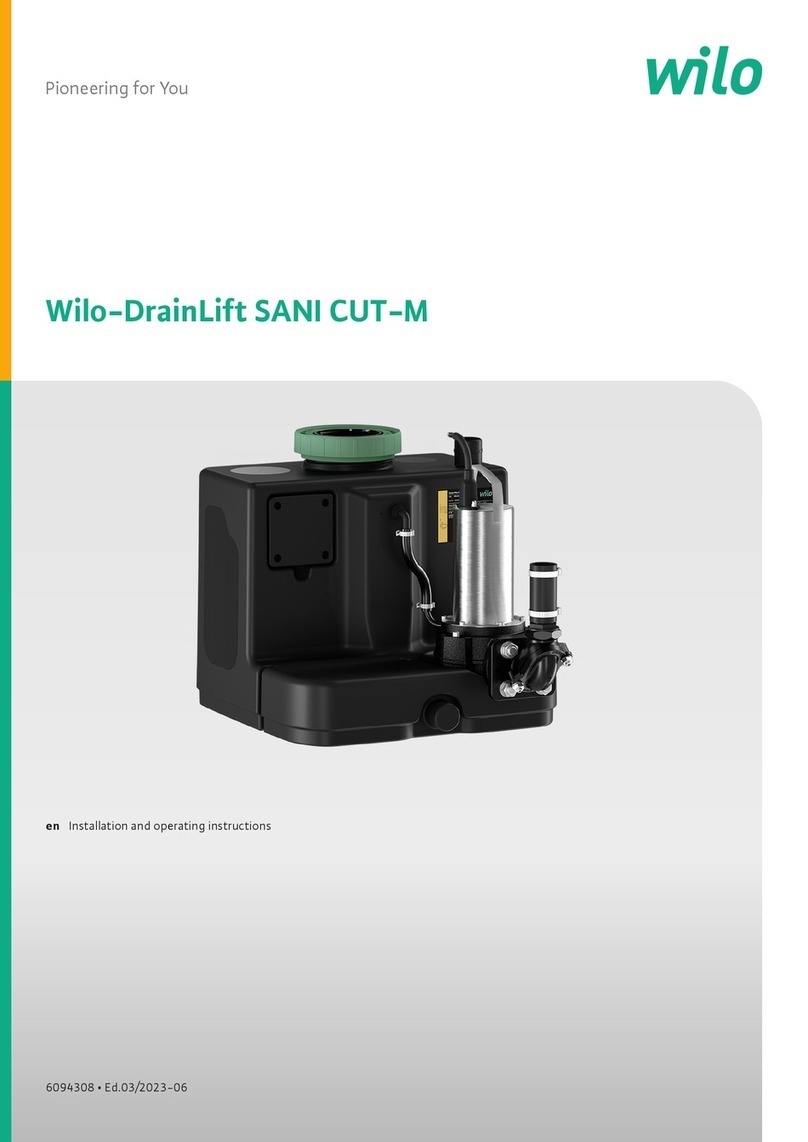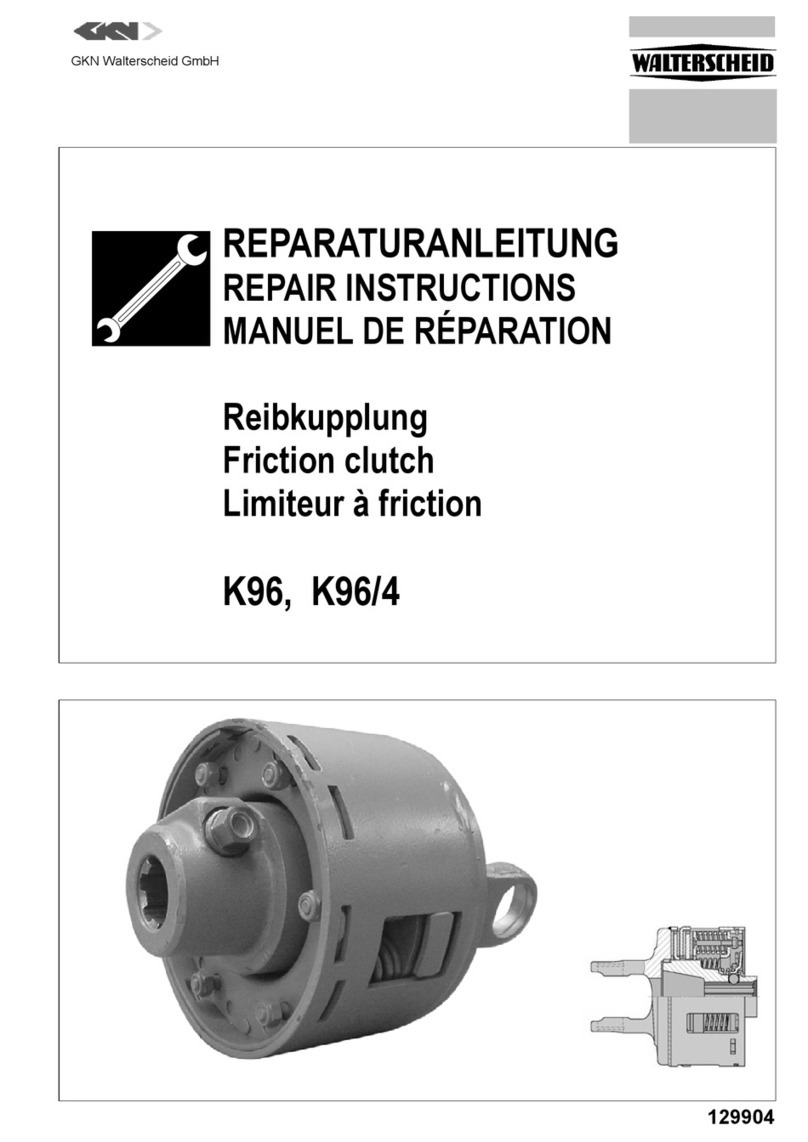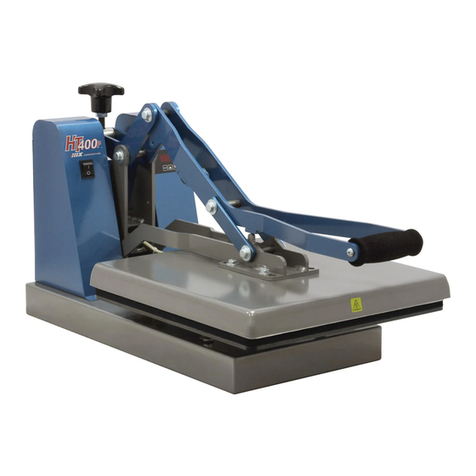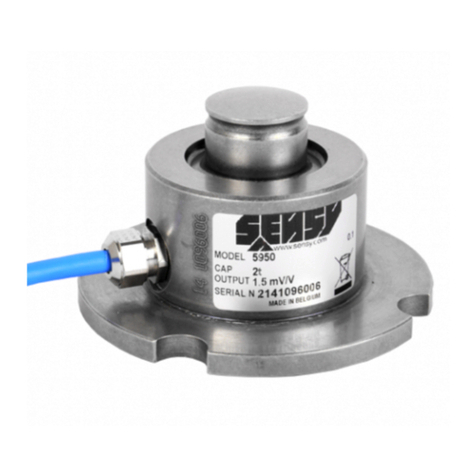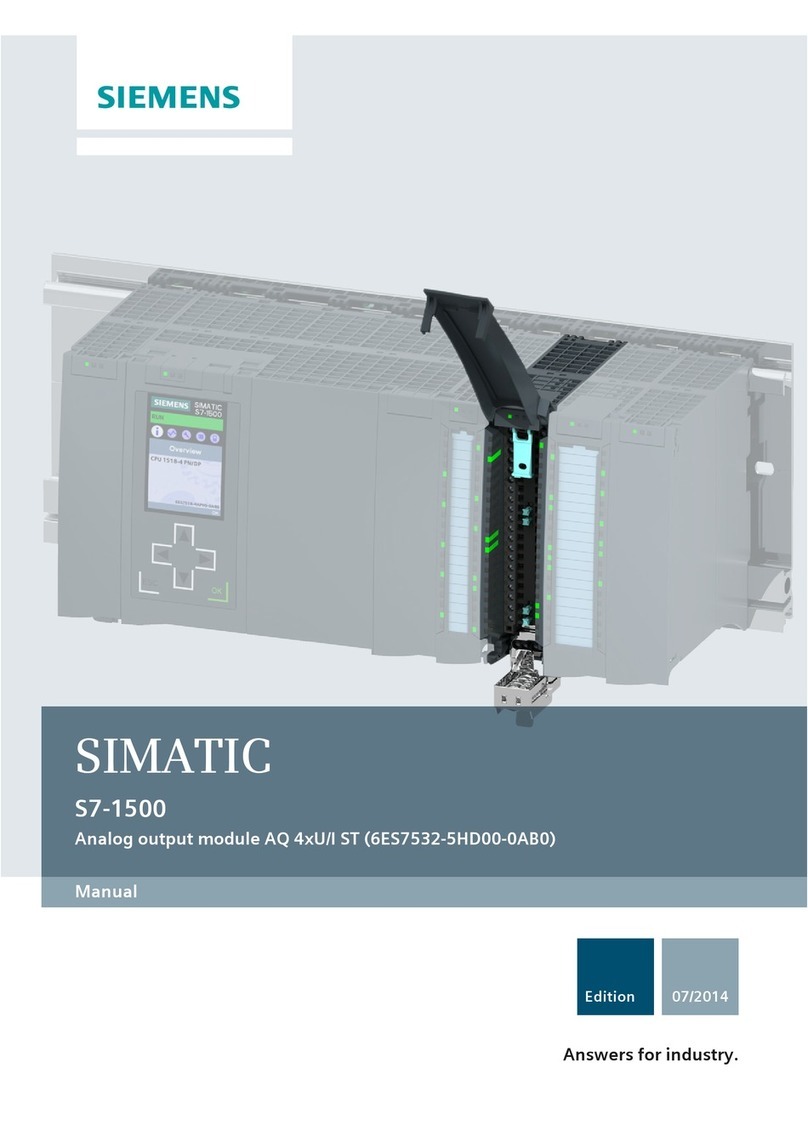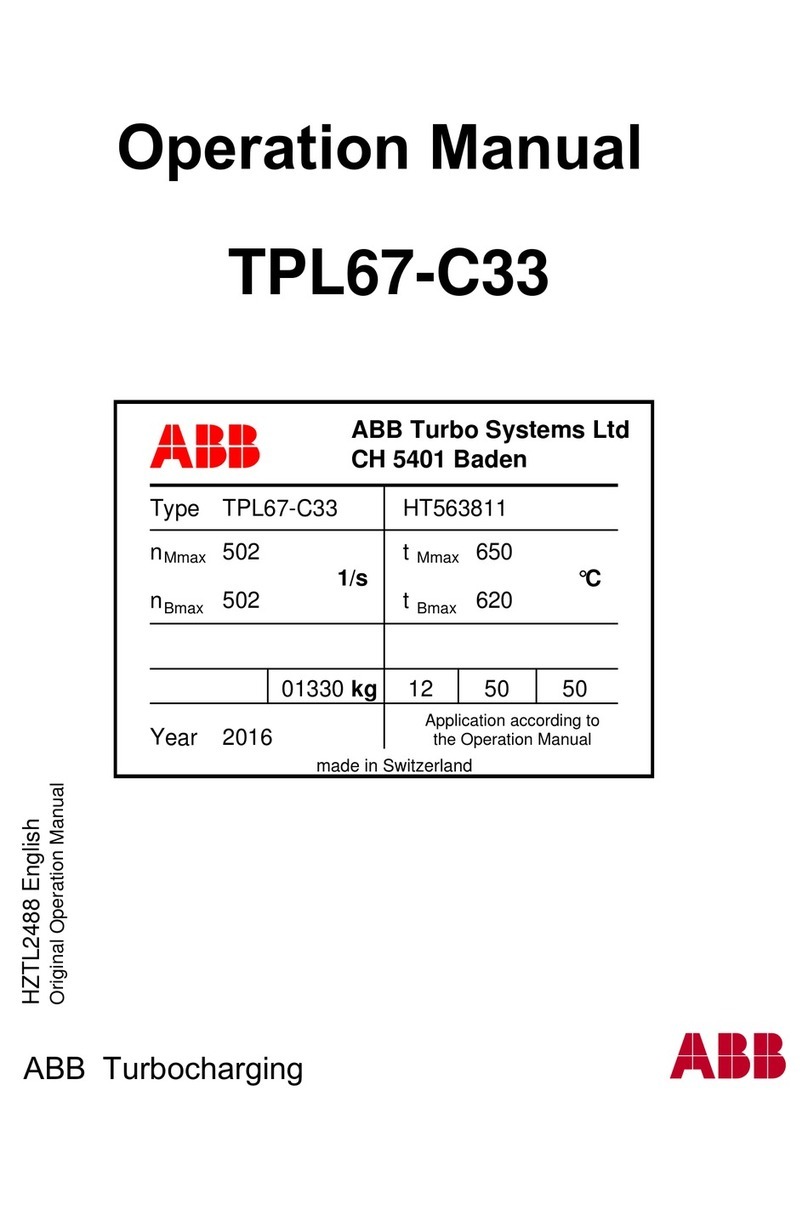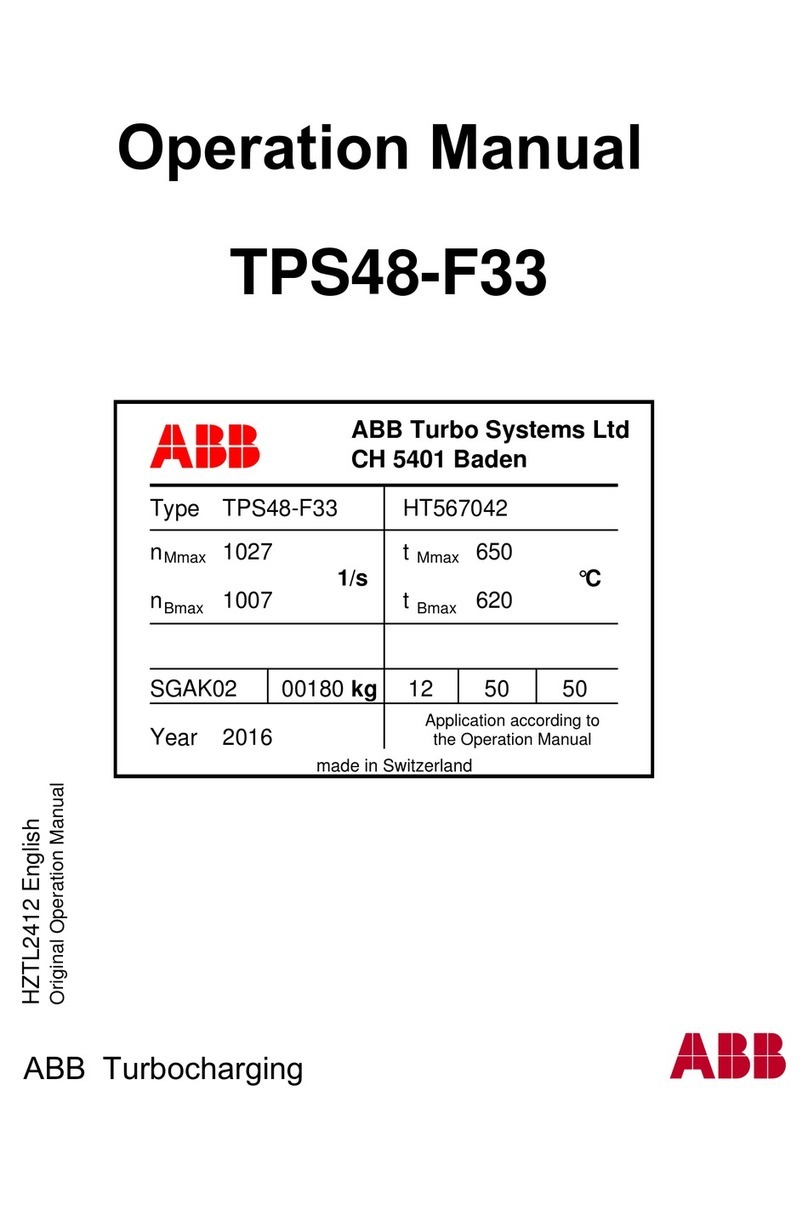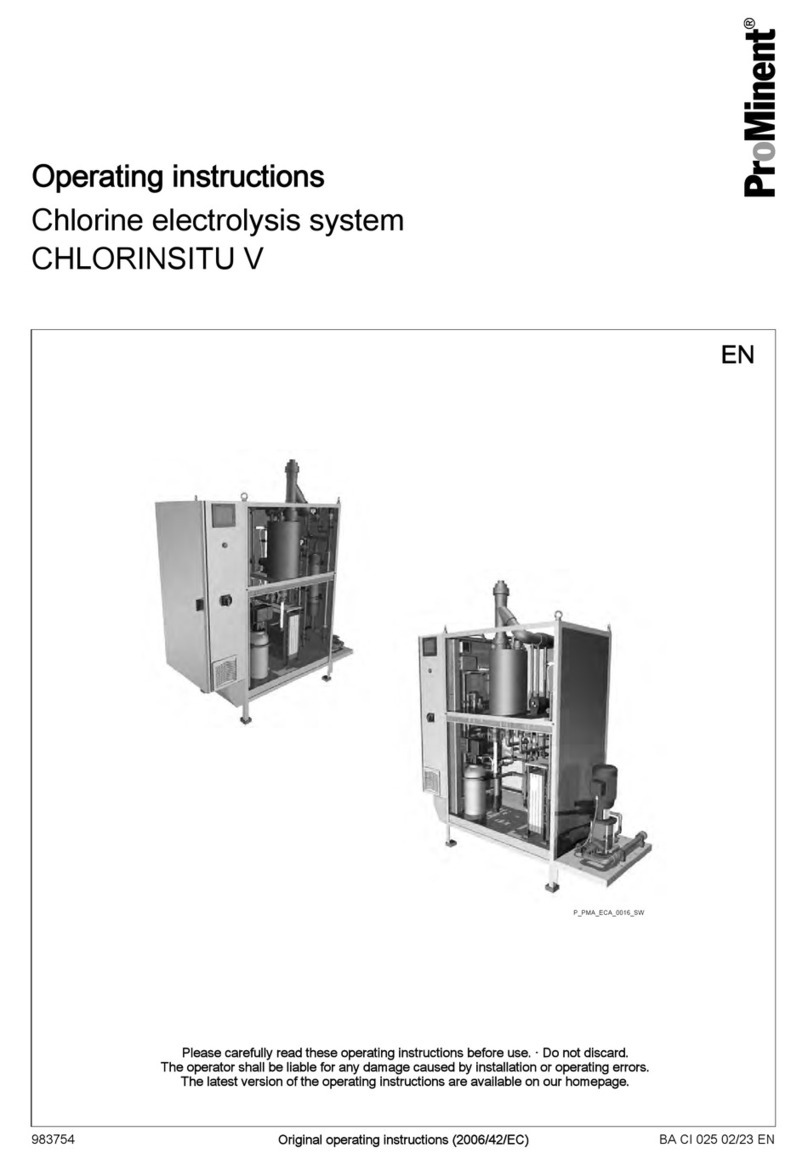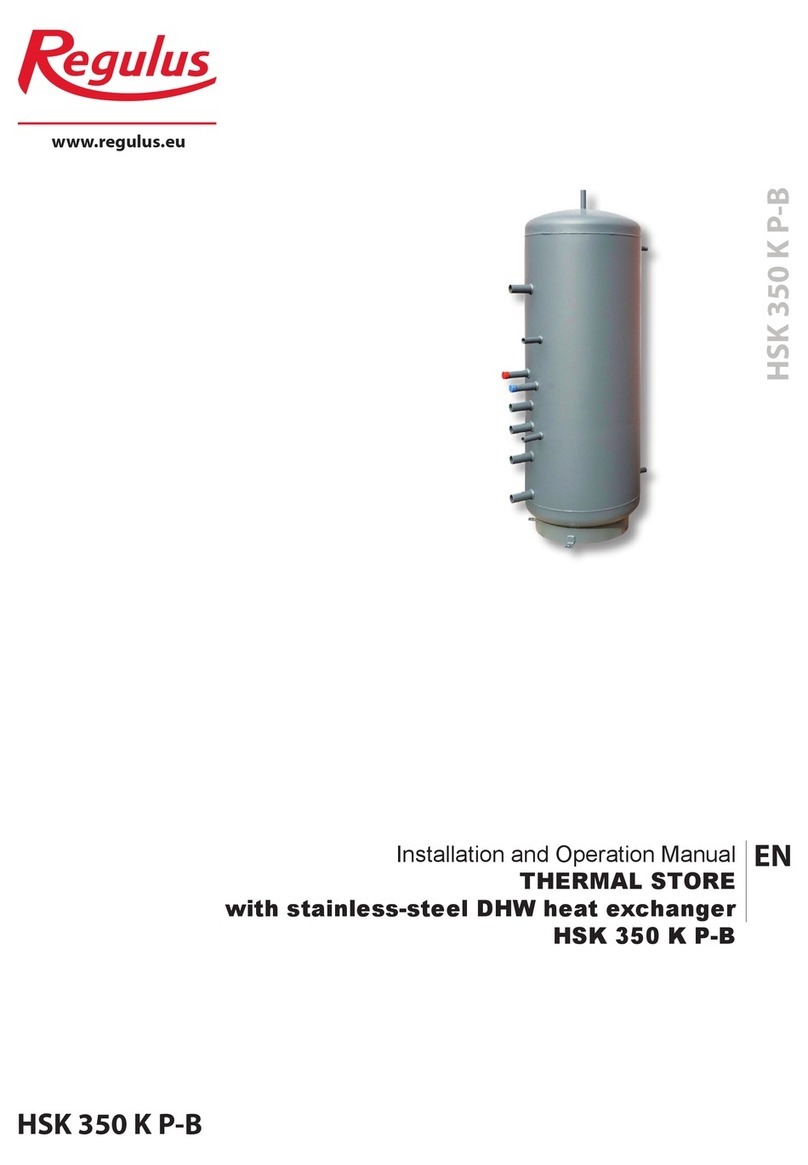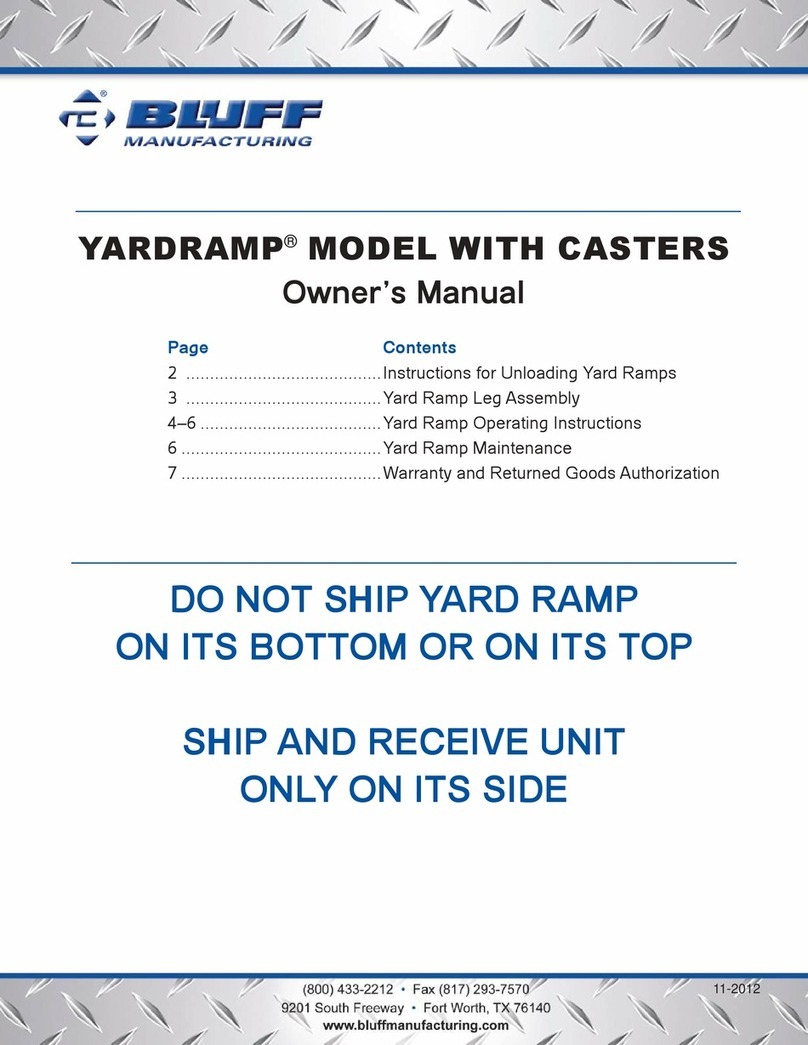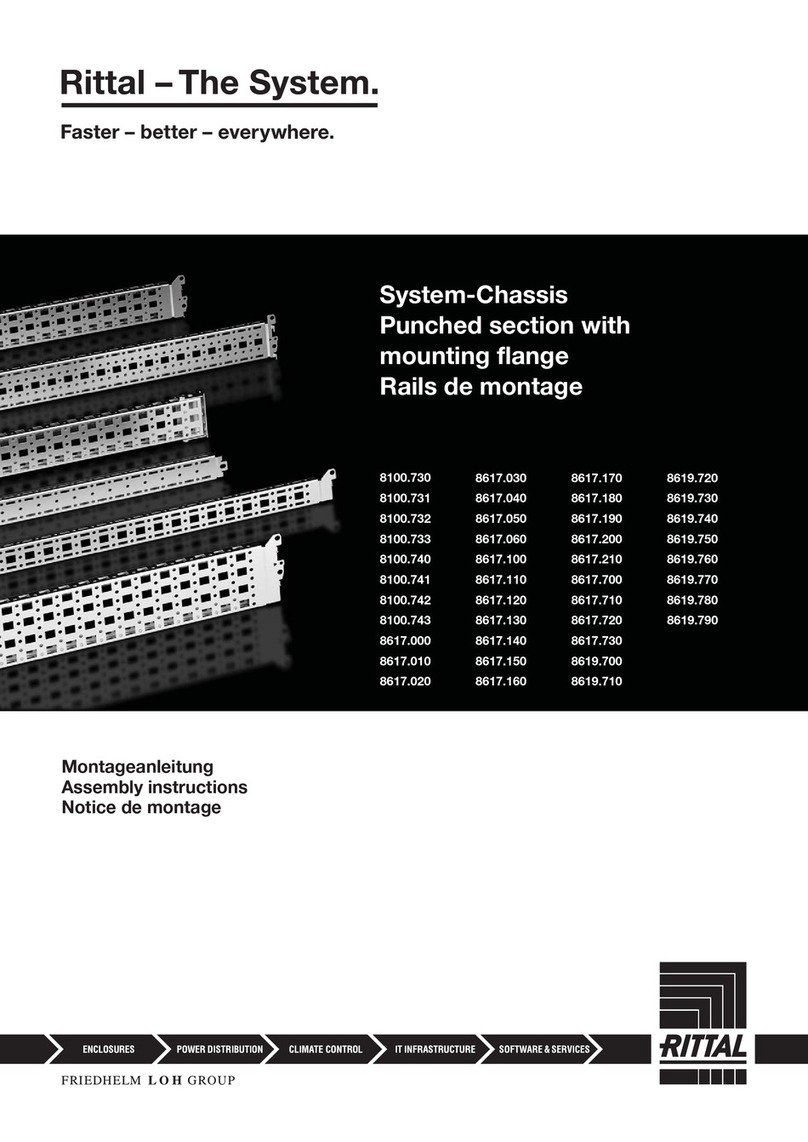Gary Machinery 3354 User manual

SINGLE WHEEL
SLITTER
METAL PROCESSING EQUIPMENT
www.GaryMachinery.net
MODEL 3354
INSTRUCTION MANUAL
G
A
R
Y
M
A
C
H
I
N
E
R
Y
G
A
R
Y
M
A
C
H
I
N
E
R
Y
LL
C
LL
C
1931 EastMainStreet
Griffith, IN46319
Phone:219/980-5700
F
A
X
:
2
1
9
/
9
8
0
-
0
4
0
5

OPERATOR SAFETY GUIDELINES
1. All operators and maintenance people must familiarize themselves with the
location of the power shut-off.
2. Be sure you know the machine –capacity, controls, operating mode and
safeguarding.
3. Never place any part of your body at the point of operation when the machine is
running.
4. Never operate, service repair or adjust the machine without proper instruction
from your supervisor and without reading and understanding the operators
manual.
5. Never operate the machine without guards or barriers.
6. If the machine requires cleaning, service, adjustment, or should become jammed,
do not insert hand in point of operation to remove assist, release, service or
adjust unless the following is done.
?Shut off machine
?Pull plug –remove power source
?Make sure supervisor is present
7. Make certain all personnel are away from the equipment before operating.
8. Keep alert –keep your mind on your job.
9. When leaving your machine, turn the power OFF –controls inoperative.
10. Keep your work area clean.
11. Wear snug fitting clothes.
FAILURE TO FOLLOW SAFE OPERATING PROCEDURES MAY RESULT IN SERIOUS
INJURY –TO YOU OR ANOTHER EMPLOYEE
1. Removal of guards punishable by law.
2. Become familiar with power shut-offs before operating this machine.
3. If machine requires service, adjustment or should become jammed, do not insert hand in point
of operation to remove, assist, release, service, or adjust, unless the following is done:
oShut off machine;
oPull plug -remove power source;
oMake sure supervisor is present;
4. Any malfunctions of this machine should be brought to the attention of foreman or
supervisor.
5. Instructions should be available for operation and he should be reviewed on this information
before being permitted to operate this machine.
6. It is suggested that after the equipment has been installed barrier guards be erected where
needed to prevent personnel entry into potential hazard areas.

Gary Machinery LLC “Single Wheel Slitter”
Operating & Instruction Manual
Introduction:
The Gary Machinery Single Wheel Slitter is thoroughly inspected before leaving our plant. This
includes running material through the unit to be sure that all components are operating properly
and that a satisfactory cut can be made.
To simplify the machine set up and to maintain proper operating, the following recommended
set-up steps have been outlined. Please read these carefully, and if any questions arise, call us
at any time.
Opening the Carton:
The Single Wheel Slitters are shipped in a heavy carton. The machine weight is just under 300
lbs. so whatever handling means are employed, care must be exercised to avoid personal strain
or equipment overload. Once the slitter is removed, the unit should be checked for damages
that may have occurred during transit.
If a means of overhead lifting is available, machine may be removed from the shipping container
using the eyebolt provided. A slight rearward tilt is normal.
If overhead liftingis not available, carton may be cut away and machine handled using extended
rods at each end as carrying handles.
NOTE:The plywood base to which themachine is attached for shipping may be removed as
desired. However, if optional support stand has been ordered, the board will serve as a top for
the stand and should be retained.
1 to 2 inches
Cut around base of carton

Remov
e these three bolts
Leave this bolt in place
Slide blocks even
With each other to
position shown –
Do NOT tighten hand knobs
This hole fits over the bolt head in LS block
Setting Up the Machine:
The squaring arm (gauge) is shipped loose and must be bolted in place before use. Procedure
is as follows:
a) Loosen hand knobs and move sliding mount blocks to the center of machine.
b) Remove both bolts from RS sliding block and the back bolt from L.S. sliding block using the
Allen wrench provided in accessory package.
c) Position gauge as shown in illustration and slide through opening in main housing.
d) Position gauge over remaining bolt on L.S. block.
e) Install bolts removed in step D finger tight.
f) Slide entire assembly up against stop collars at rear of machine and tighten all bolts being
careful not to move blocks away from stops. NOTE: Bolt on LS block will not tighten
against gauge bar; it is used only as a retainer to prevent bar from lifting off block.
Gauge Mounting

g) Gripping top of gauge bar with hands positioned to each side of the mount blocks and
applying even force the gauge should now slide easily throughout its width range.
Gauge Squaring
Position bolt head
Bump these blocks up
against stop collars
Retainer bolt; should
not fully tighten
against gauge bar.
Tighten these bolts

NOTE: Gauge Squareness
The stop collars used to position the slide blocks are factory set so that each time the gauge is
removed and re-installed the square between the gauge and cutter will be correct. If gauge is
not square, tapered strips will result. If stop collars should ever come loose or sheet metal
portion of gauge be replaced, it will be necessary to re—set squareness by the method used at
the factory. See Illustration below.
Once squareness is correct & bolts tightened, slide assembly to maximum width cut & re-set
stop collars.
Operation:
When ready to operate, remove the rust protective spray that was applied at the factory. You
are now ready to plug the machine in. Make sure that operating toggle switch is in the “off”
position. These machines are 110 Volts as a standard and will have a standard plugto be
plugged into a standard 110v outlet with grounded outlet.
Loosen locking knobs on gauge assembly and slide to position for cut size desired. The size of
cut may be directly read from the scale on the side of the machine. The scale pointer is factory
calibrated to the position of the cutters and should require no adjustment.
Tighten locking knobs, after positioning gauge.
Position blade of
square on this edge
Combination Square
or
Try Square
Loosen these bolts and
square sheet metal gauge to
main housing. (Check both
entry & exit sides.)

Use of the Sheet Guide:
The sheet guide supplied is used to
hold material to the gauge. As
material is fed into the unit, locate the
sheet guide on the operator side of
the sheet. Only exert sufficient
pressure to keep the material to the
gauge. This will insure dimensional
control and safe operation.
Turn machine “on” and note rotation of cutters. The upper cutter should be rotating in a
clockwise direction. The machine is designed to be fed from the right-hand side with slit
material exiting on the left as the operator stands facing the cutters.
Position edge of sheet to be cut into slot in thegauge
assembly. Hold the opposite edge of the sheet with the
sheet guide provided (Part#100011).
TOP VIEW
Cutter Knives
90
°
The locking knobs are located
on the sliding blocks on each
side of the machine
Shee
t
Side Guide
Feed Direction

Keep hands and clothing clear of opening in the side of the machine and rotating shaft on the
exit side.
NOTE:It is advisable upon initial operation of machine to check width and squareness
accuracy by running some test strips (2” –3”wide). If width is not as set using gauge pointer,
pointer may be bent or repositioned to correct. If parts are tapered, gauge squareness may not
be correct (refer to set-up procedure for gauge squareness).
Operating Hints and Cautions
Introduction:
To utilize the sheet slitter to its maximum capacity requires familiarization with the machine.
The operator of the slitter will gain most of this during actual machine running. The following list
contains some of the techniques we have found to maintain a maximum output with a minimum
set up time. It also includes an outline of the way to set the unit up for the best slitting results
and a trouble-shooting guide has been provided covering the most common problems and their
solutions.
Trouble Shooting Guide:
Material is not cut through
•Material thickness or tensile strength exceeded capacity of machine. 16 Ga. (.060”) is the
maximum thickness & 50,000 psi is the maximum shear strength.
•Knives penetration gap is not deep enough
Factory set at
.040” (±.005”)
(View is exaggerated to show clarity)

•Knives side clearance is too great
•Knives are extremely dull
•Clamp collars are loose
•An arbor may be loose at bearing or the bearing pins removed from the housing.
Burred Edge
•Knife side clearance is too great
•Chipped knife (burr will be random along edge and occur at approx. 12½”intervals)
•Dull knife
•Soft material
•Buildup on knife edge
Rolled Edge
•Dull knives
•Excessive penetration of cutters (Note, penetration & side clearance of cutters is factory
set to attain satisfactory results. Cutting material ranging from 30 ga. to 16 ga. a certain
amount of rolled edge must be expected when slitting light gauge material)
Tapered Stripped
•Gauge positioning out of square (refer to setup instructions)
•Material not being held into gauge with side guide. (refer to operating instructions under
sheet guide
•Build up on gauge
Material "hang-Up" in Machine
•Ragged edge on material getting trapped in gauge
•Gauge excessively worn. Replace gauge.
Machine Stalling
•Capacity exceeded.
•Motor defective
HORIZONTAL SIDE CLEARANCE
10% of stock thickness.020” -.060”
.00075” to .001”.010” -.018”
.0005” to .00075”.006” -.010”
.006 AND UNDER
NO CLEARANCE
STOCK THICKNES CLEARANCE
To obtain satisfactory results with any
slitting machine it is vital that the
horizontal clearances be properly set.
Final clearance adjustments are best
determined by making test runs with the
actual material to be slit. However these
setting have proven to be fairly accurate.
Allowance should be made for deflection
of the arbors, which occurs due to the
thickness and type of material being cut.
Note: Softer materials may need less
side clearance and harder materials may
need more side clearance.
Factory set at
.001” (±.0005”)
This allows for
slitting a wide range
of product, but many
not be optimum for
exclusive use on
heavy gauge
materials.

A
A
90
Excessive Drive Train Noise
•Chain loose. Adjust tension with take-up assembly; remove link from chain if take-up does
not provide enough adjustment
•Gears worn in motor gearhead (refer to manufacturer’s instructions).
•Defective idler bearing on chain wrap.
•Defective shaft bearing.
•NOTE:Gearhead motors are normally somewhat noisy. If motor is quiet when slitting
material, the motor is probably ok.
Lubricating & Maintenance Instructions
To maintain the Gary Machinery Slitter in its best operating condition and to avoid downtime, the
following items should be checked on a regular schedule.
1. The gear reducer should be checked when received to be sure the oil is at the proper level.
It should then be checked at regular intervals, with visual inspection of oil seals for possible
leaks. If oil is required, Browning GL32HT (or equivalent) is recommended. The oil can be
added through the plug at the top of the reducer. Caution must be taken not to overfill the
unit.
2. The arbors, knives, gauge bar, guide rods and skid table should be wiped down and
lubricated with a light oil such as WD-40. This will help prevent rust and remove debris from
the slitter. They should be re-lubricated on a regular basis. This re-lube period should be
more often if the slitter is operated in extremely dusty atmospheres.
3. The guard on the drive side of the slitter incorporates the main arbor bearings and provides
access to the chain and gears. Use a heavy-duty chain lube to lubricate chain and gears
before replacing the guard. Aerosol form is most convenient and effective. Keep drive
chain clean and well lubricated and check chain tension regularly.
4. Keep all fasteners tight and check that all guards are in place.
5. Lightly lubricate gauge rods periodically to maintain smooth movement as well as keep
clean.
6. Keep all unpainted surfaces lightly oiled to prevent rust.
Slitter Knife Sharpening Procedure:
1. The knife sharpening must be done by grinding the side
faces. DO NOT GRIND OUTSIDE DIAMETER.
2. Squareness of bore to side face must be maintained
(90°)

Instructions for the Removing or Replacing of Knives
to Model No. 3354
Gary Single Wheel Slitter
STEP #1 -Remove top and bottom cutter guards.
STEP #2 -Jog machine around so that screws in retainer rings and knives are accessible with
an Allen-wrench as shown on sketch. Unplug machine. Loosen locking screws in
retainer rings and setscrews in knives.
STEP #3 -Remove outside retainer rings and upper stripper ring. Slide inside retainers and
lower stripper ring back against housing.
STEP #4 -Rotate knives to position shown below and remove.
STEP #5 -Resharpen knives per enclosed instructions being careful to maintain the cutting face
at 90° to the bore.(ref to knife sharpening instructions or send back to factory for re-
sharpening)
STEP #6 -Re-assemble unit by reversing above procedures.
STEP #7 -Without bringing knife faces into contact with each other, tighten and loosen the knife
setscrews two or three times to “seat” on the keys.
STEP #8 -Set gauge pointer to some arbitrary length (3” or so) and tighten locking knobs to hold
in place. Using a small scale to measure from the inside of the gauge slot to the
cutting face of the knife, set the lower knife to the distance indicated by thegauge
pointer. Tighten setscrew tight (use rotational force only, do not pull Allen wrench to
side while tightening or knife may cock.
TOP
BOTTOM
Outside Retainer Ring
Inside Retainer Ring
Stripper Ring
Knife

STEP #9 -Insert 0.003’ feeler gauge between upper and lower knife faces and gently slide
upper knife into place (do not force or knife may cock) . Using slow gradual torte,
partially tighten the setscrew in the upper knife being careful not to exert any side to
aide force on the wrench——do not fully tighten screw. aemcve wrench and feeler
gauge.
STEP #10-Plug machine in and turn on. Watch clearance between knives as they rotate. If
knives are running true, the gap will remain the same. If gap opens and closes (knife
appears to wobble) then one or both of the knives are cocked and will have to be
reset —if gap ~s okay then fully tighten upper knife setscrew and double check to
make sure knives are still running true. If okay, jog machine around so that
setscrews are accessible and unplug machine.
STEP #11-push upper and lower stripper rings and retainers up against the sides of the knives
and rotate so tbat locking>c crews are accessible. hold retainers against knives and
stripper rings. (Tooling setup should now appear as shown in figure 11.)
STEP #12 -Re—install upper and lower guards.

Part No.
Description Part No.
Description
100011 Sheet Guide 202450 Foot Mount
103533 Gage Pointer 202451 Arbor
105254 SM Gage *N.S.
202453 Gage Rod Block
105256 Upper Knife Guard 202454 Gage Slide
105257 Lower Knife Guard 202455 Gage Bar
105258 Chain Guard 202462 Brewer SS Chain Tensioner *N.S.
105345 Sheet Skid *N.S.
202483 Thrust Cap
200003 1/2" Chain Idler Bearing 202646 Knives
200004 40BS10 Motor Sprocket 202647 1" Collar
200007 Gearmotor 2Z848 202648 Stripper Ring
200008 Electric Cord w/plug *N.S.
202649 5/32”T Handle
200011 5/16”T Handle (optional for collars) 202678 Guide Rod
201261 40B14 Sprocket 202682 Reid DK-28 Knob
202409 Browning Bearing 285048 #40 Chain
202431 Measuring Stix *N.S.
285155 2x4 Handy Box
202440 Top Plate 285159 Toggle Plate Cover
202446 Side Plate 285160 SPST Switch
202447 End Plate 285908 3/8”-16 x 2 1/4 Eye Bolt *N.S.
202448 Base Plate *N.S.–Not Shown
100011
Sheet Guide
200004 Motor Sprocket
200007 Gearmotor
202483
Thrust Caps 20244
0
Top Plate
201261 Arbor Sprockets
202447 End Plate
202446 Main Side Plate
105258 Chain Guard
285155 Handy Box
285159 Toggle Plate Cover
285160 SPST Switch
202451 Arbor
105254 Gage
202455 Gage Bar
202678 Guide Rod
202454
Gauge Slide Block
202409 Bearing
202647 Collar
202648 Stripper Ring
202646 Knife
202647 Collar
105257 Lower Knife Guard
105256 Upper Knife Guard
202453 Gage Rod Block
202448
Base Plate
200011 5/16” T-handle Wrench
(for use on knife)
202649 5/32” T-handle Wrench

MODEL 335
4
SINGLE WHEEL SLITTER
Overall Depth
(Carring handles) 41”
Maximum cut width 24”
Gauge Lenght 36”
Arbor diameter 1”
Knife dimensions 4” O.D. x ¾”
Motor HP ? HP
Feed speed (FPM) 40 FPM
Voltage 110V –1 Ph.
Weight 300 Lbs.
Proudly
Made In
America
By
www.GaryMachinery.net
Specifications
G
A
R
Y
M
A
C
H
I
N
E
R
Y
G
A
R
Y
M
A
C
H
I
N
E
R
Y
LL
C
LL
C
1931 EastMainStreet
Griffith, IN46319
Phone:219/980-5700
F
A
X
:
2
1
9
/
9
8
0
-
0
4
0
5
Table of contents
